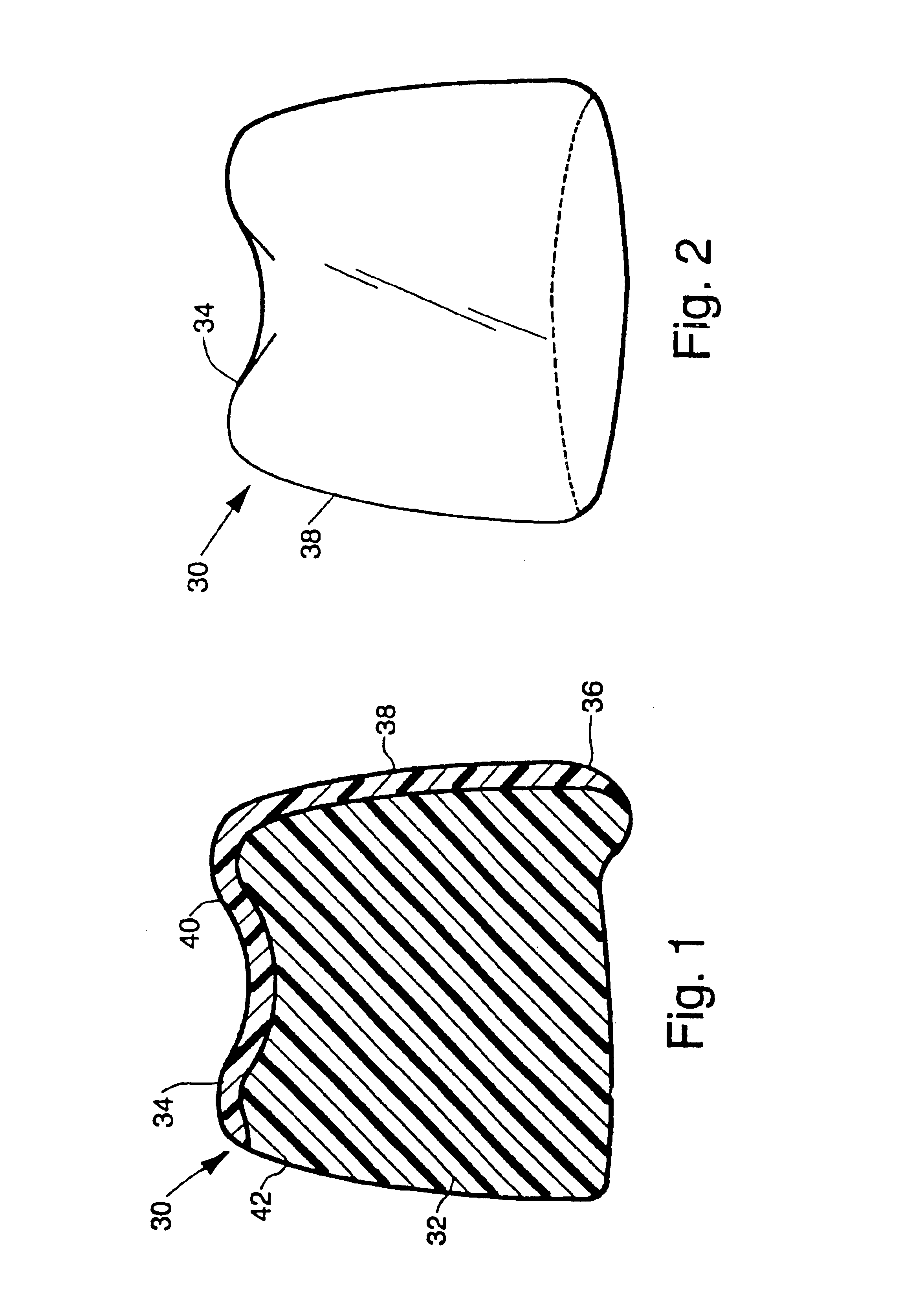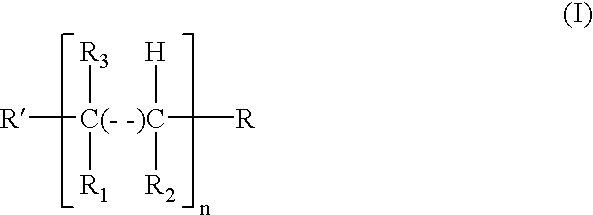Dental prosthesis
a technology for dental prosthesis and composition, applied in dental prosthesis, dental preparation, impression cap, etc., can solve the problems of difficult to form into acceptable shapes, cost consideration, and difficulty in most noble metals, and achieve the effect of superior physical and aesthetic characteristics
- Summary
- Abstract
- Description
- Claims
- Application Information
AI Technical Summary
Benefits of technology
Problems solved by technology
Method used
Image
Examples
example 2
Interpenetrating Network Teeth
The method described in Example 1 is used to prepare a precursor blend from which prosthetic teeth are molded having the following composition:
26.83%methyl methacrylate4.00%ultrahigh molecular weight polyethylene(Hoechst, AG) treated with oxygen andfluorine (50 micron largest particledimension).17%benzoyl peroxide2.11%2,2,2-trifluoroethyl acrylate2.37%ethylene glycol dimethacrylate1.52%reaction product of hydroxypropylmethacrylate with 2,2,4-trimethylhexyl-1,6-disocyanate(2:1) (urethane dimeth-acrylate) (UDMA)41.30%poly(methyl methacrylate-co-ethylenedimethacrylate) (98.8:1.2)20.65%poly(methyl methacrylate)1.05%pigment100.00%
A suitable gel-like consistency for molding prosthetic teeth is obtained after aging at ambient temperature for 24 hours. The high molecular weight self-lubricating polyethylene had a molecular weight of approximately 4,000,000 and was obtained from Hoechst-Celanese Inc. Particle surfaces were oxyfluorinated in the presence of a flu...
example 3
Interpenetrating Network Teeth
The following composition yielded a precursor blend which is molded into prosthetic teeth after processing according to the technique of Example 1.
45.83%methyl methacrylate4.00%ultrahigh molecular weight polyethylenetreated with oxygen and fluorine (50micron largest particle dimension0.17%benzoyl peroxide11.50%bis-GMA24.80%poly(methyl methacrylate-co-ethylenedimethacrylate) (70:30)11.90%poly(methyl methacrylate)1.80%pigment100.00%
example 4
Interpenetrating Network Teeth
A two-step “preswell” mixing method is used to prepare a precursor blend from which prosthetic teeth are molded. The blend has the following composition:
Step 140.40%methyl methacrylate4.00%ultrahigh molecular weight polyethylenetreated with oxygen and fluorine(50 micron largest particle dimension)0.25%benzoyl peroxide6.00%reaction product of hydroxypropylmethacrylate with 2,2,4-trimethylhexyl-1,6-disocyanate (2:1) (urethane dimeth-acrylate) (UDMA)1.50%2,2-bis(4-methacryloxyphenyl)propane47.85%poly(methyl methacrylate-co-ethylenedimethacrylate) (90:10)100.00%
The crosslinked polymer is in the form of particles, 50% by weight of which are below 100 microns in size, the balance being below about 500 microns in size.
Step 228.14%poly(methyl methacrylate)60.43%methyl methacrylate0.36%benzoyl peroxide10.20%2,2-bis(4-methacryloxyphenyl)propane0.87%pigment100.00%
The poly(methyl methacrylate) has an average molecular weight of 850,000 g / mole.
The weight ratio of St...
PUM
| Property | Measurement | Unit |
|---|---|---|
| diameter | aaaaa | aaaaa |
| bond strength | aaaaa | aaaaa |
| particle size | aaaaa | aaaaa |
Abstract
Description
Claims
Application Information
 Login to View More
Login to View More - R&D
- Intellectual Property
- Life Sciences
- Materials
- Tech Scout
- Unparalleled Data Quality
- Higher Quality Content
- 60% Fewer Hallucinations
Browse by: Latest US Patents, China's latest patents, Technical Efficacy Thesaurus, Application Domain, Technology Topic, Popular Technical Reports.
© 2025 PatSnap. All rights reserved.Legal|Privacy policy|Modern Slavery Act Transparency Statement|Sitemap|About US| Contact US: help@patsnap.com



